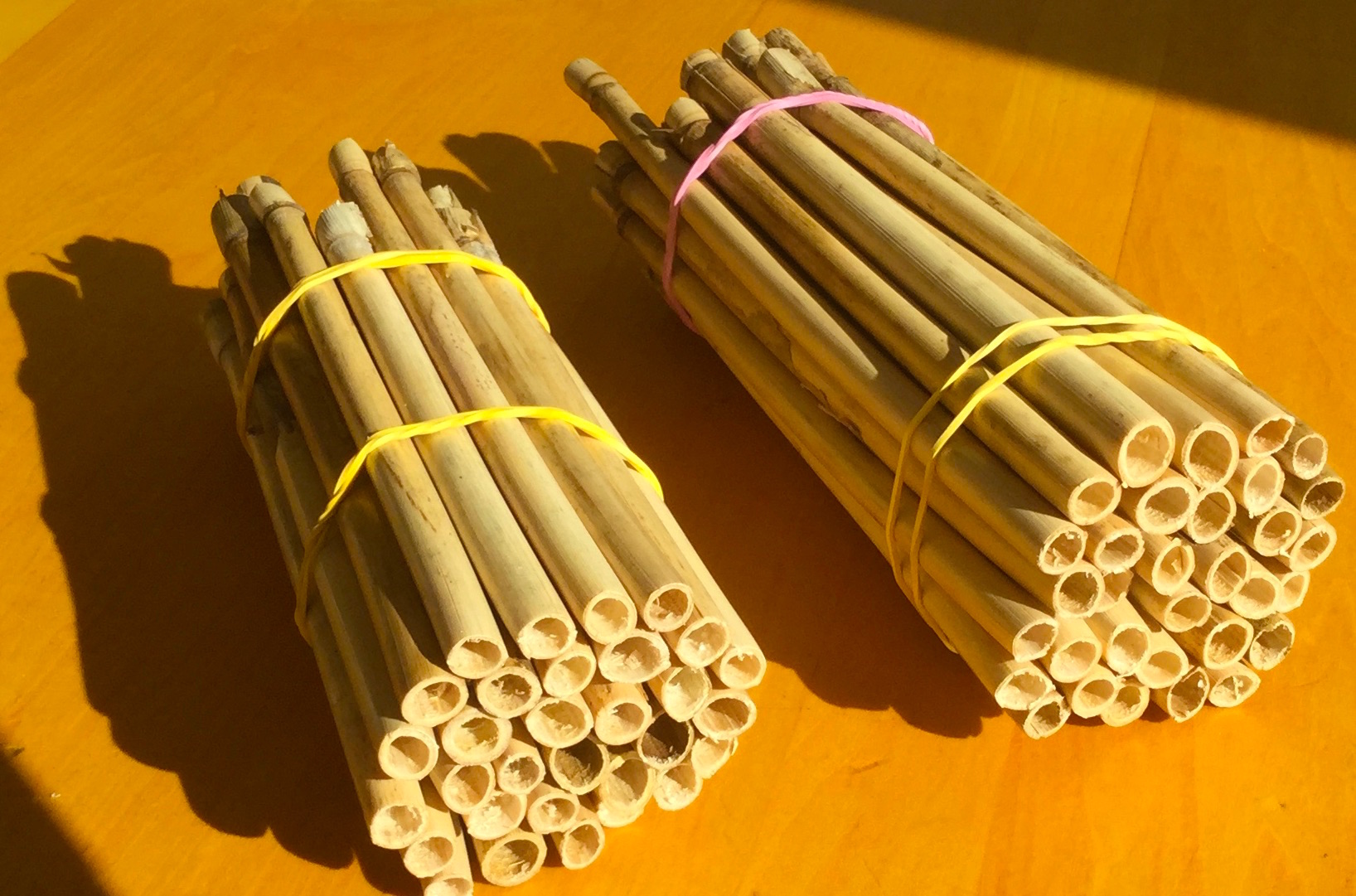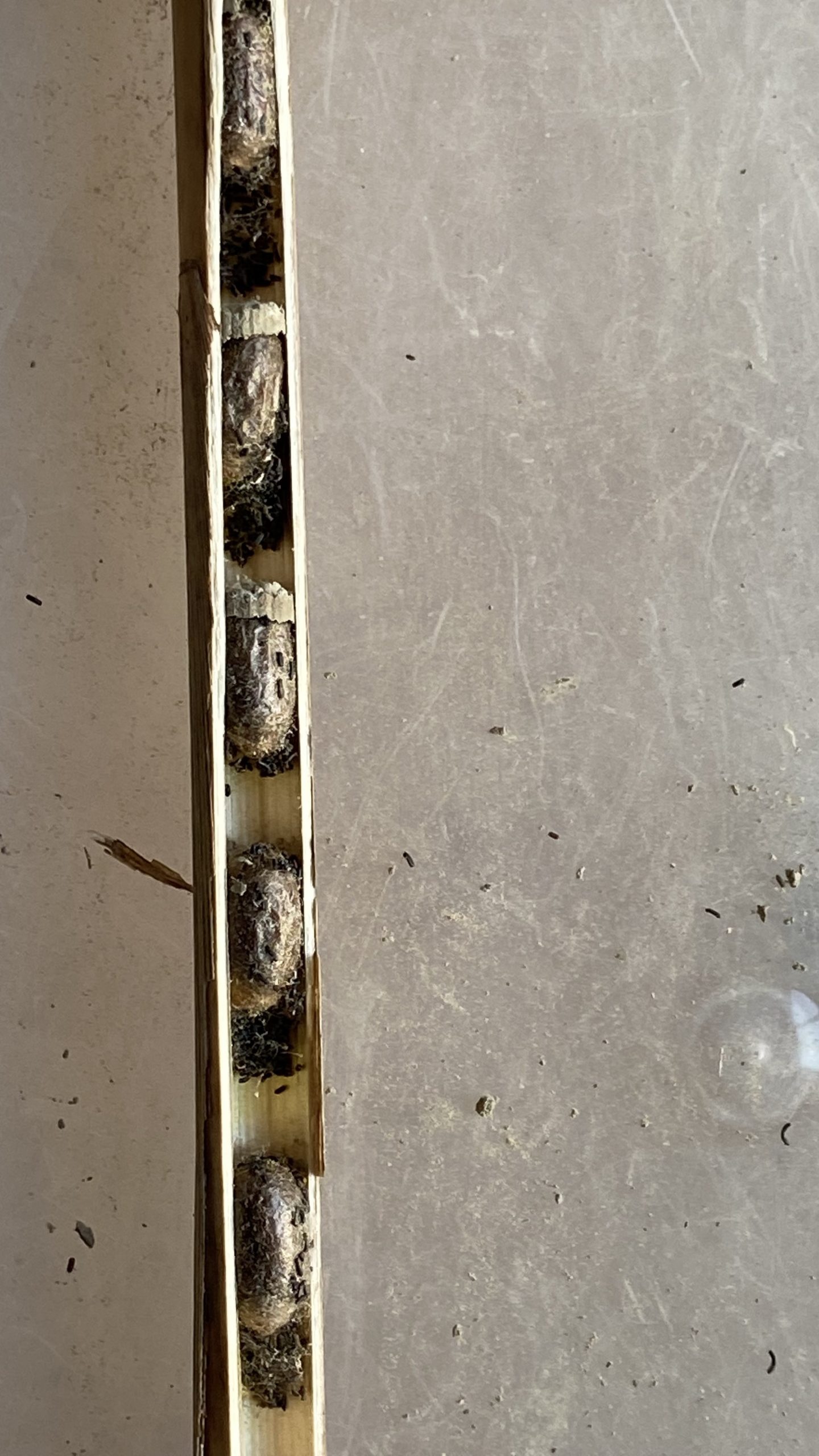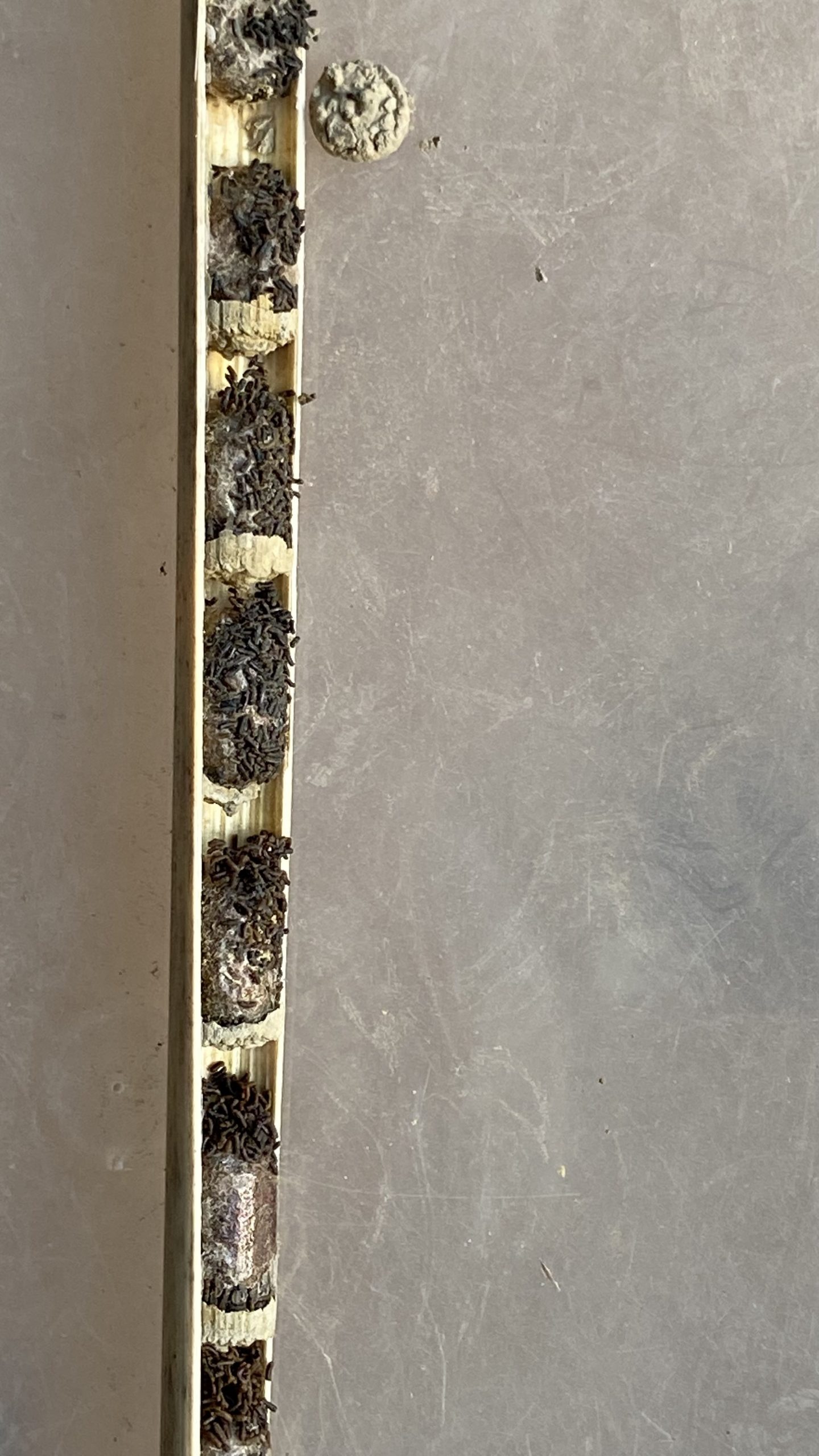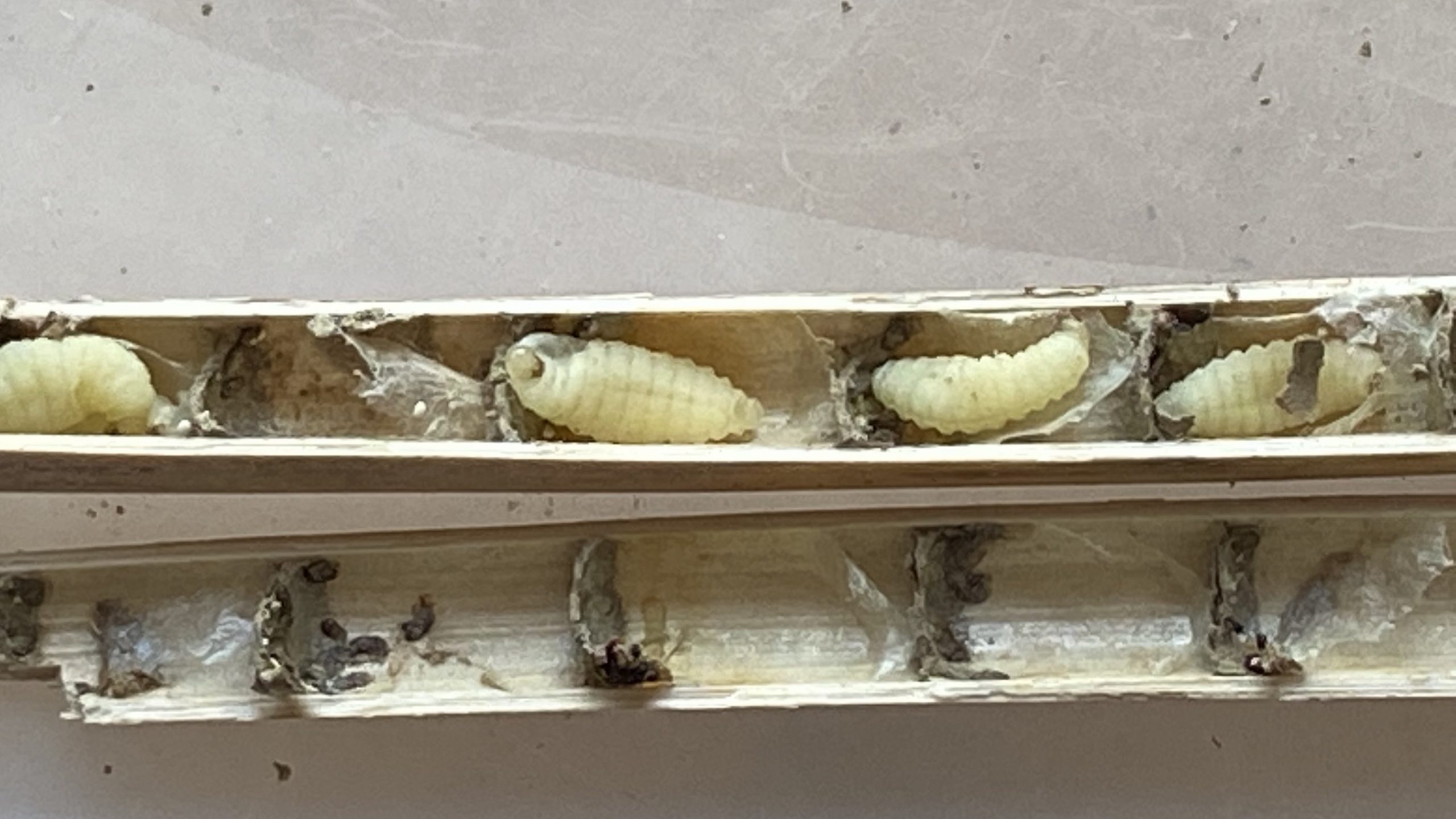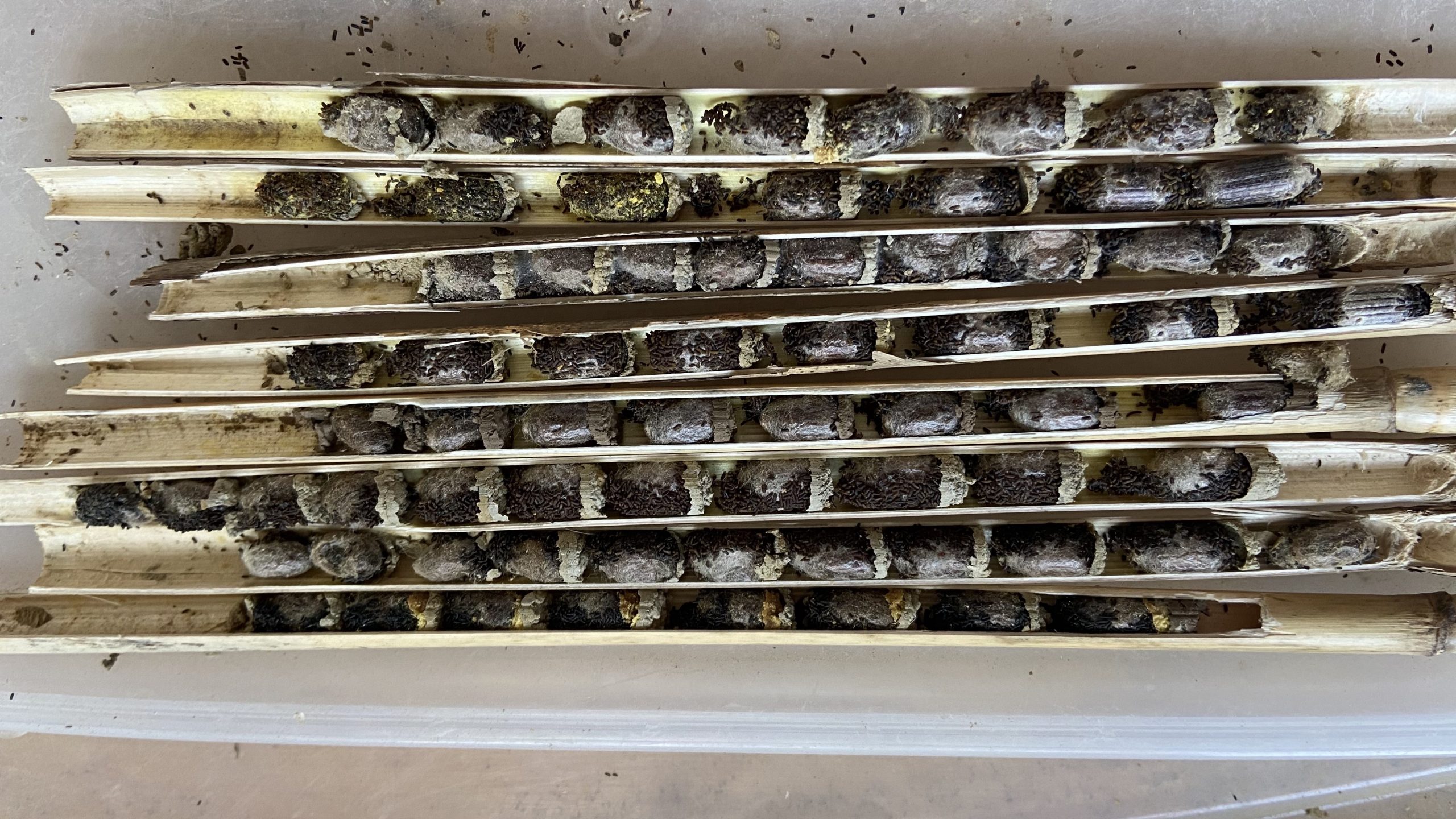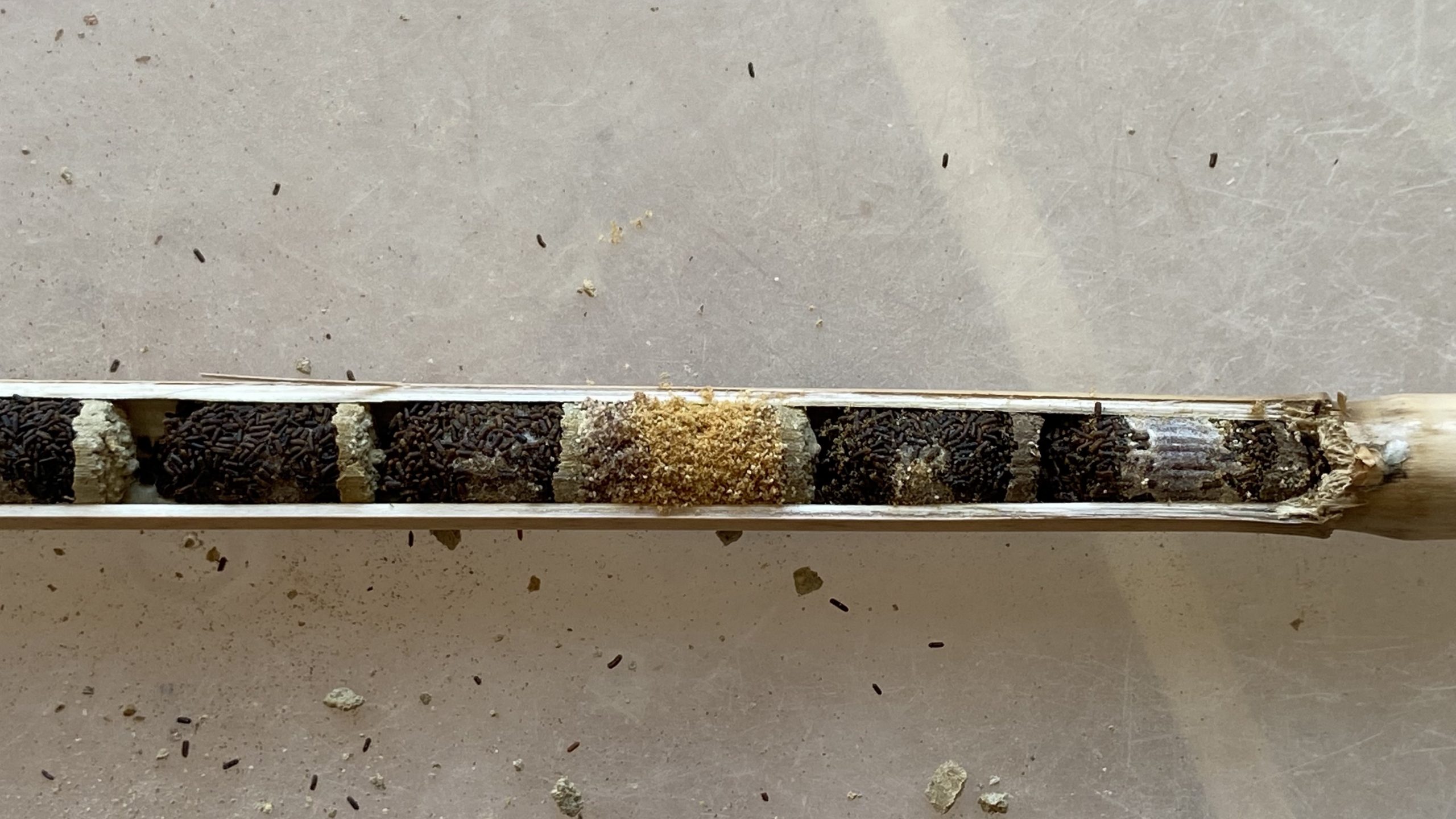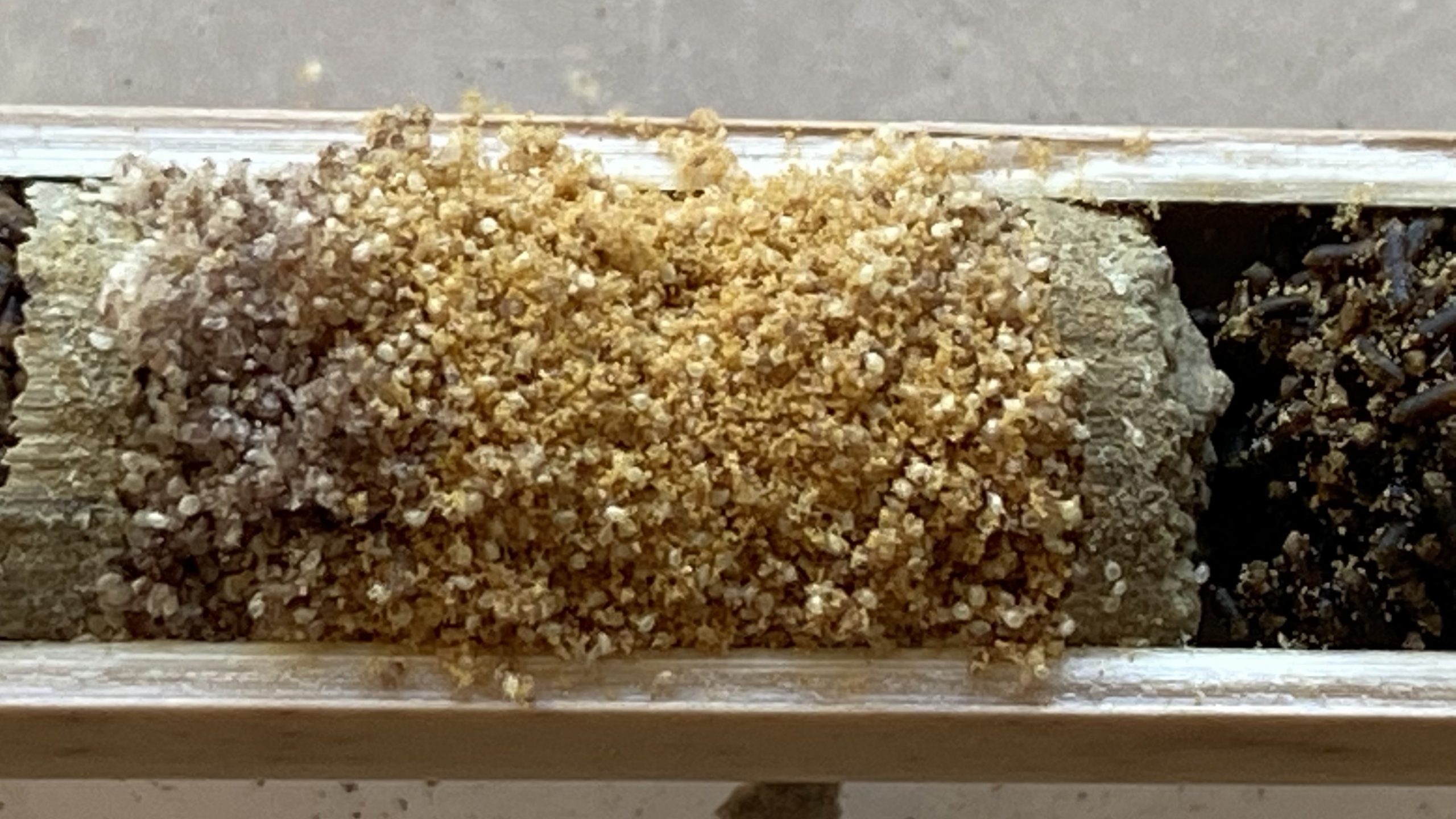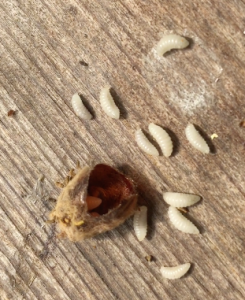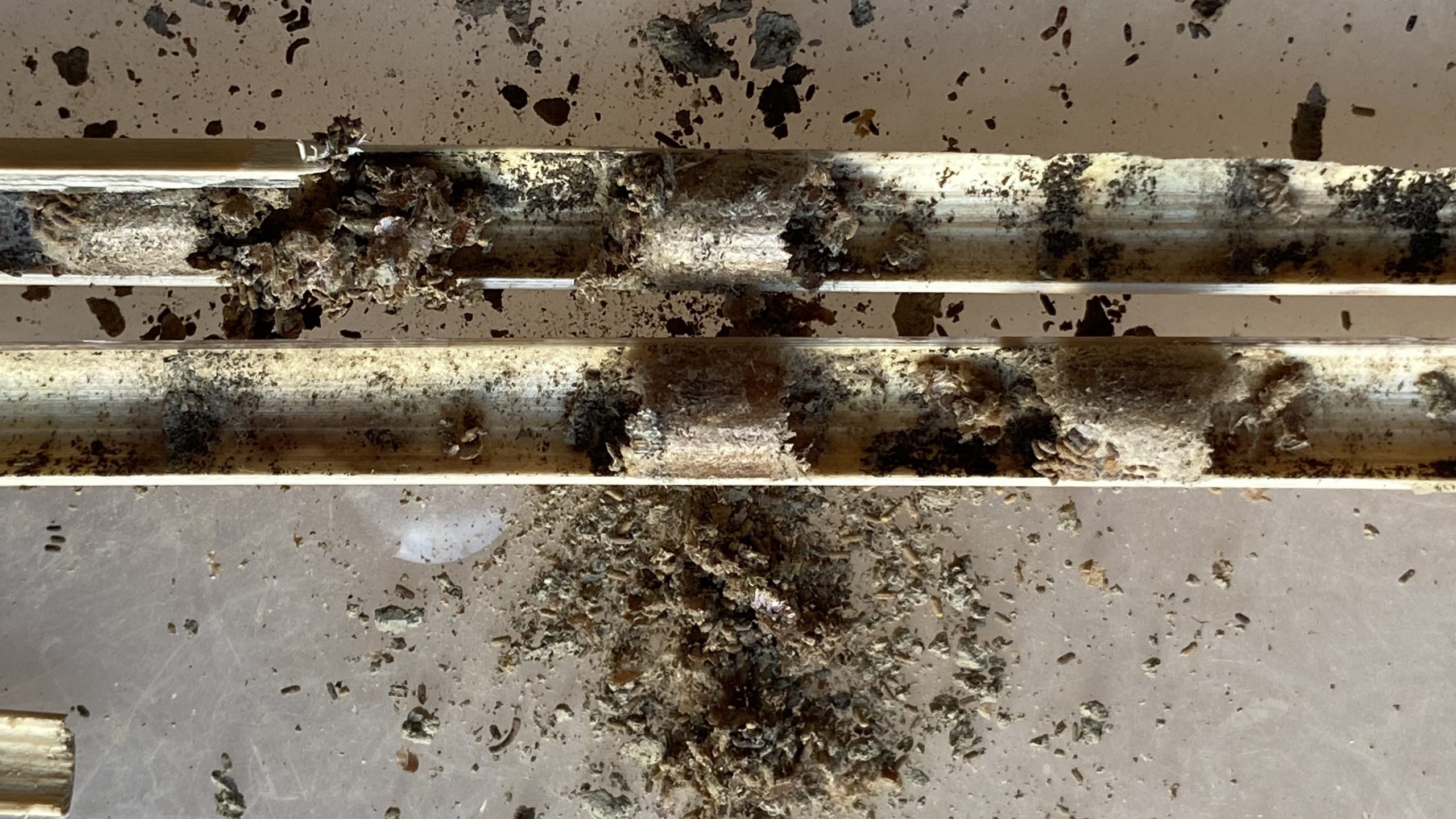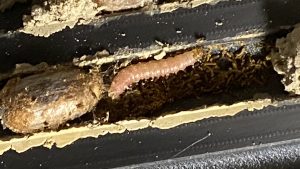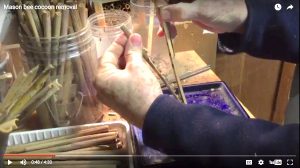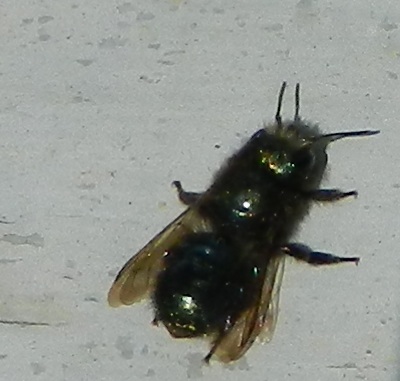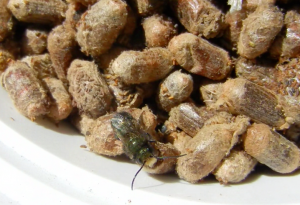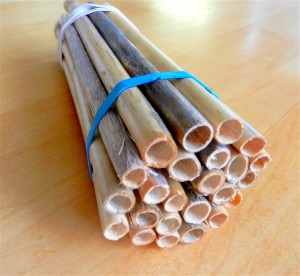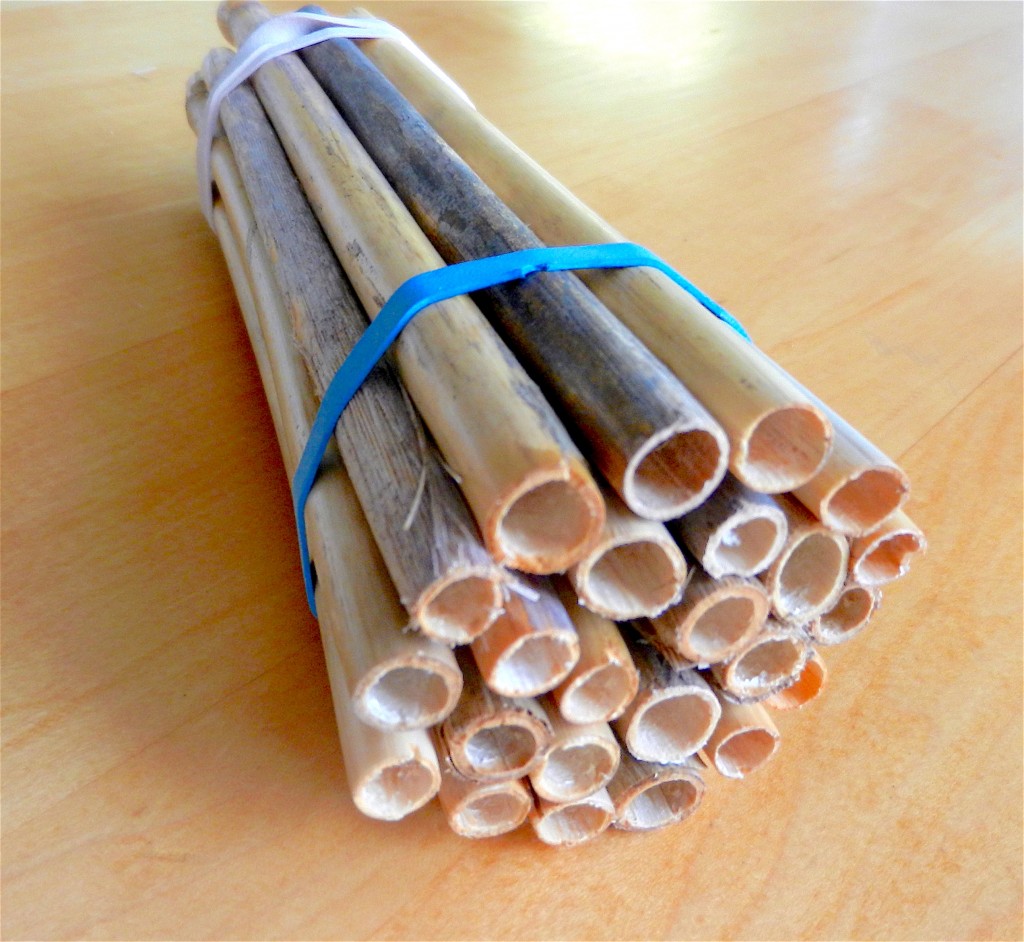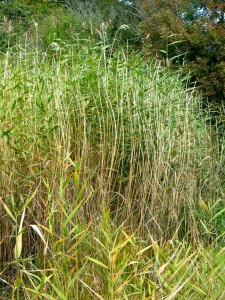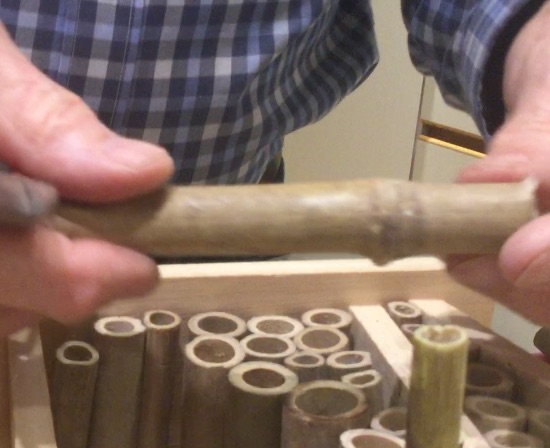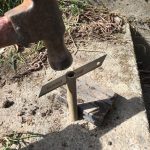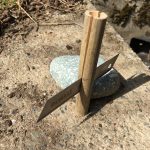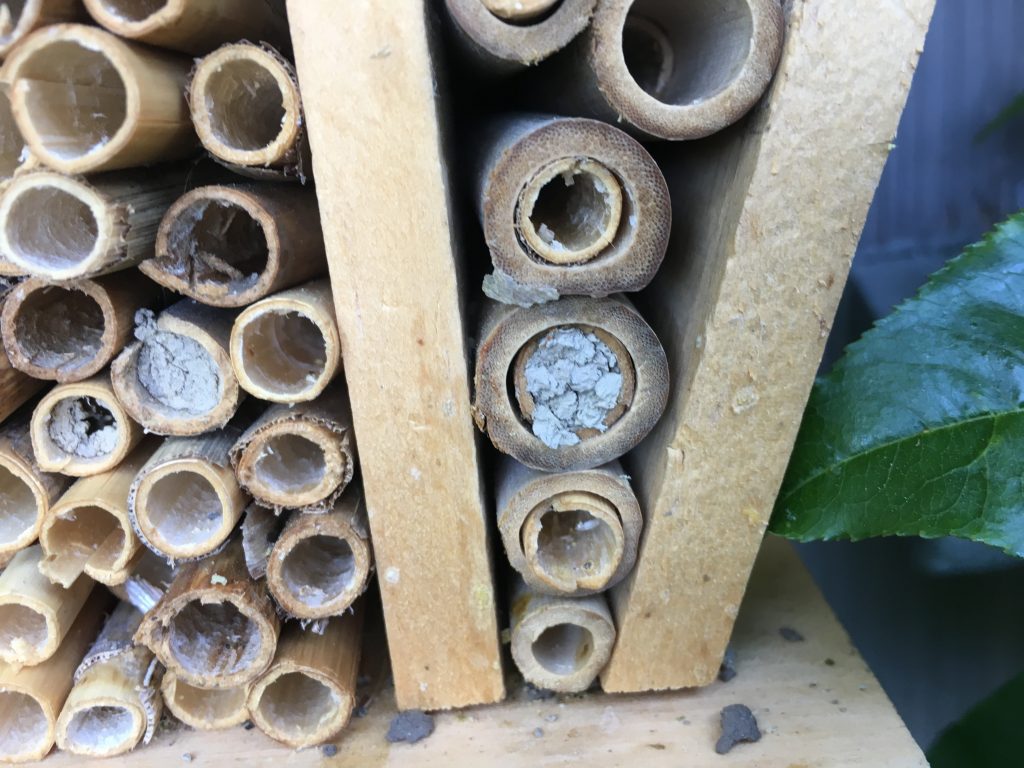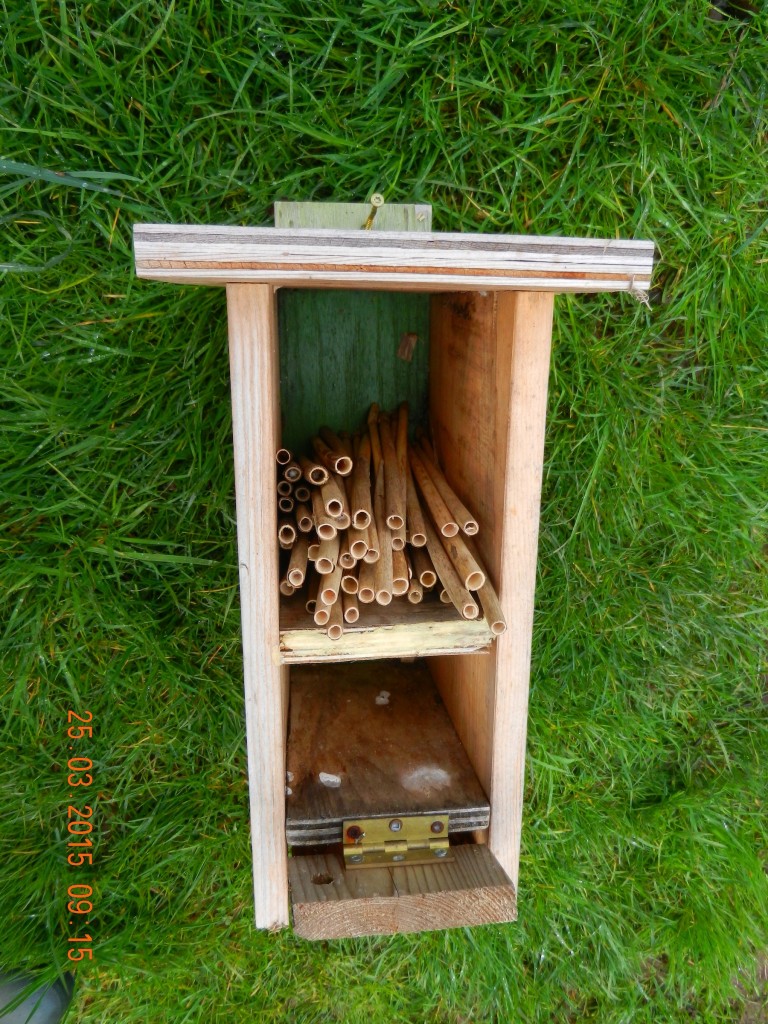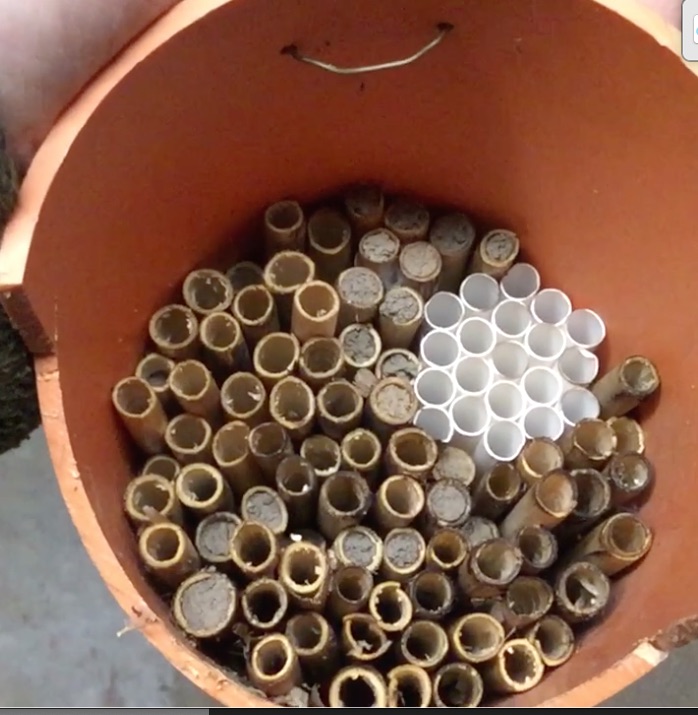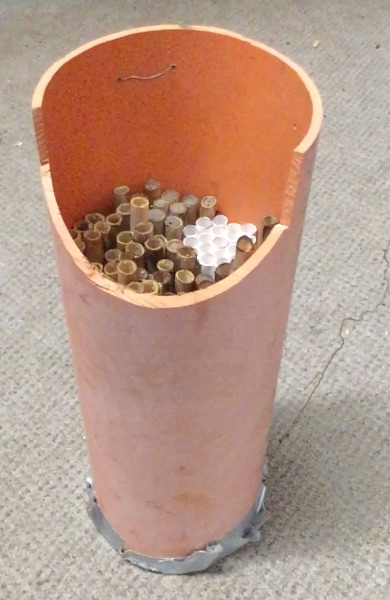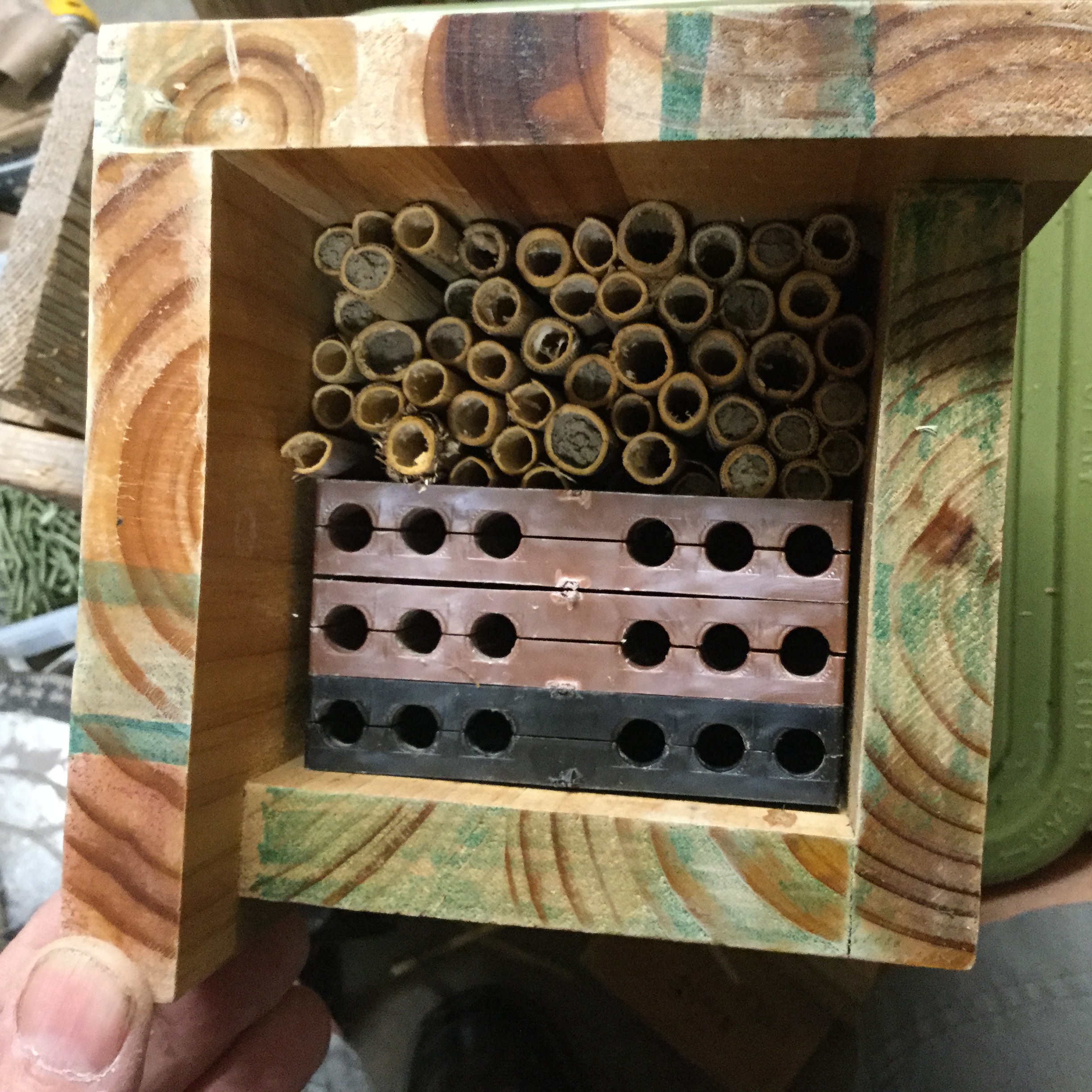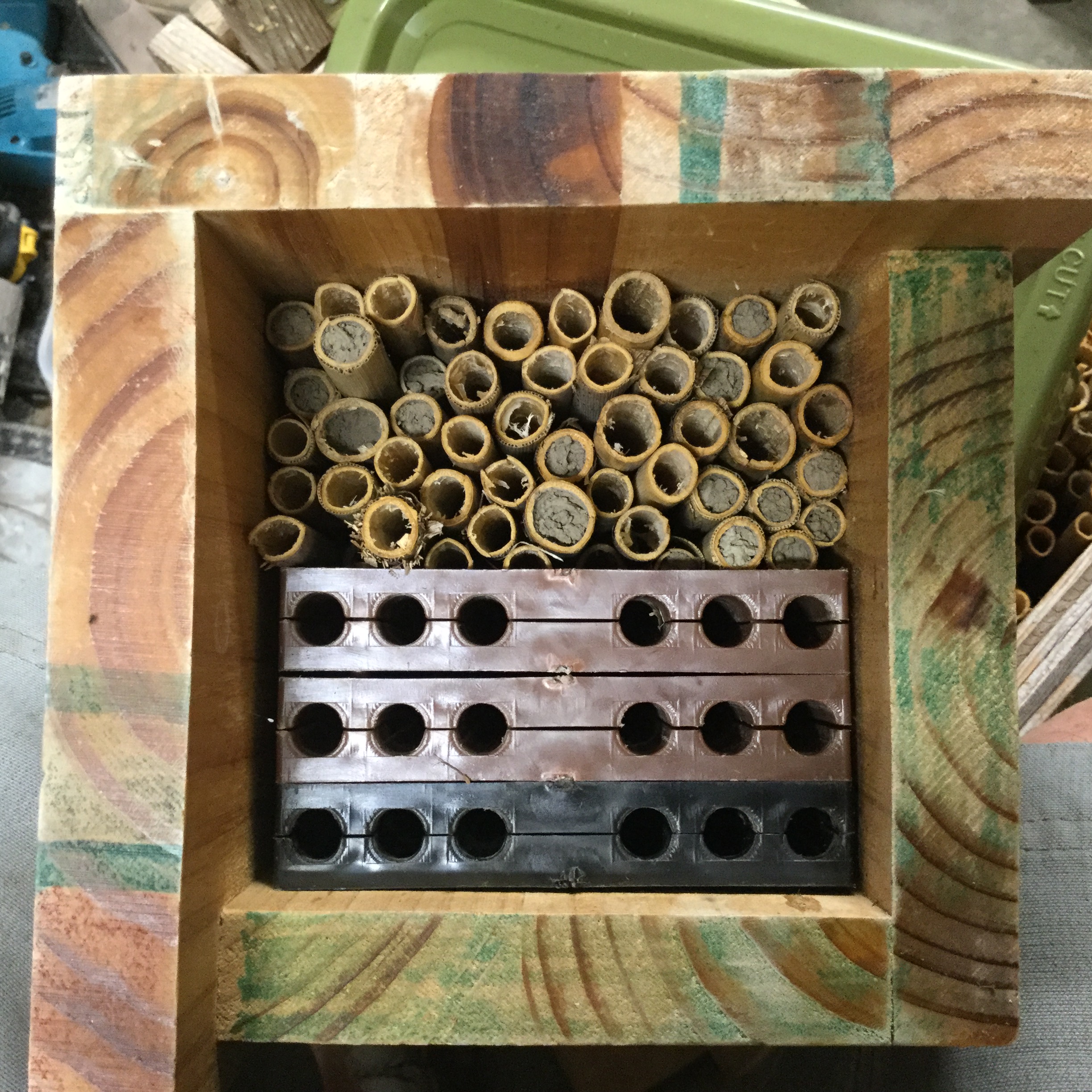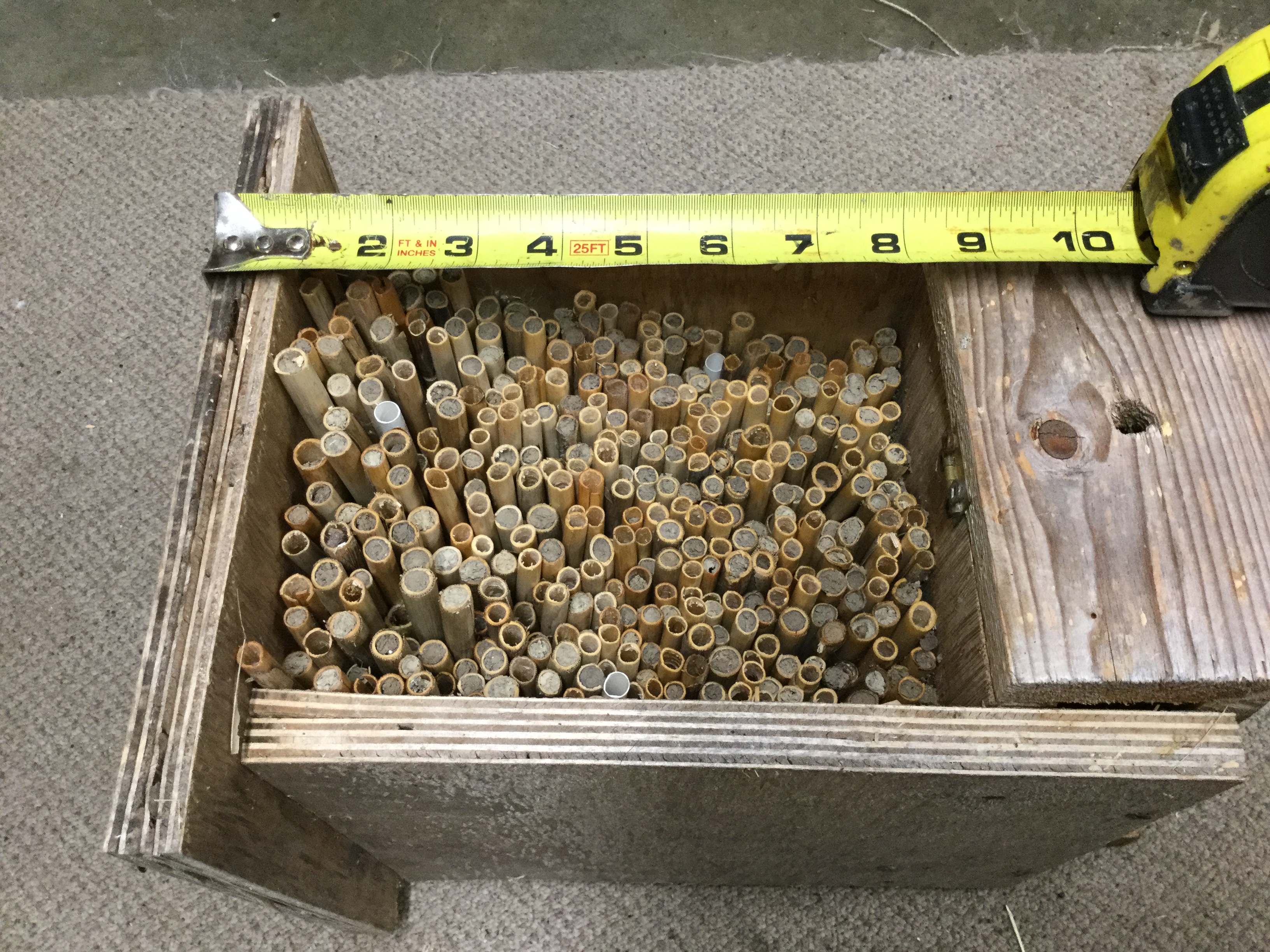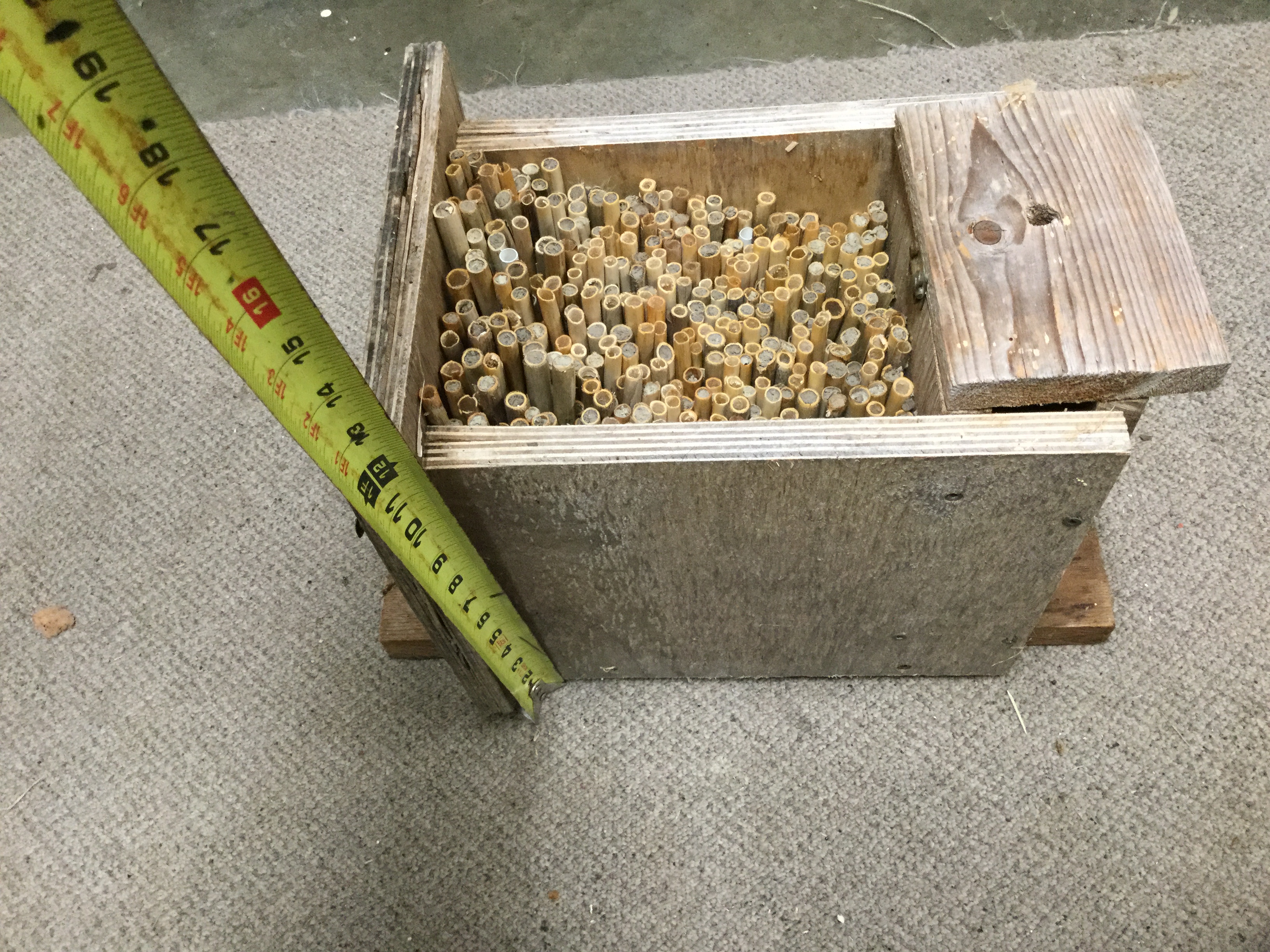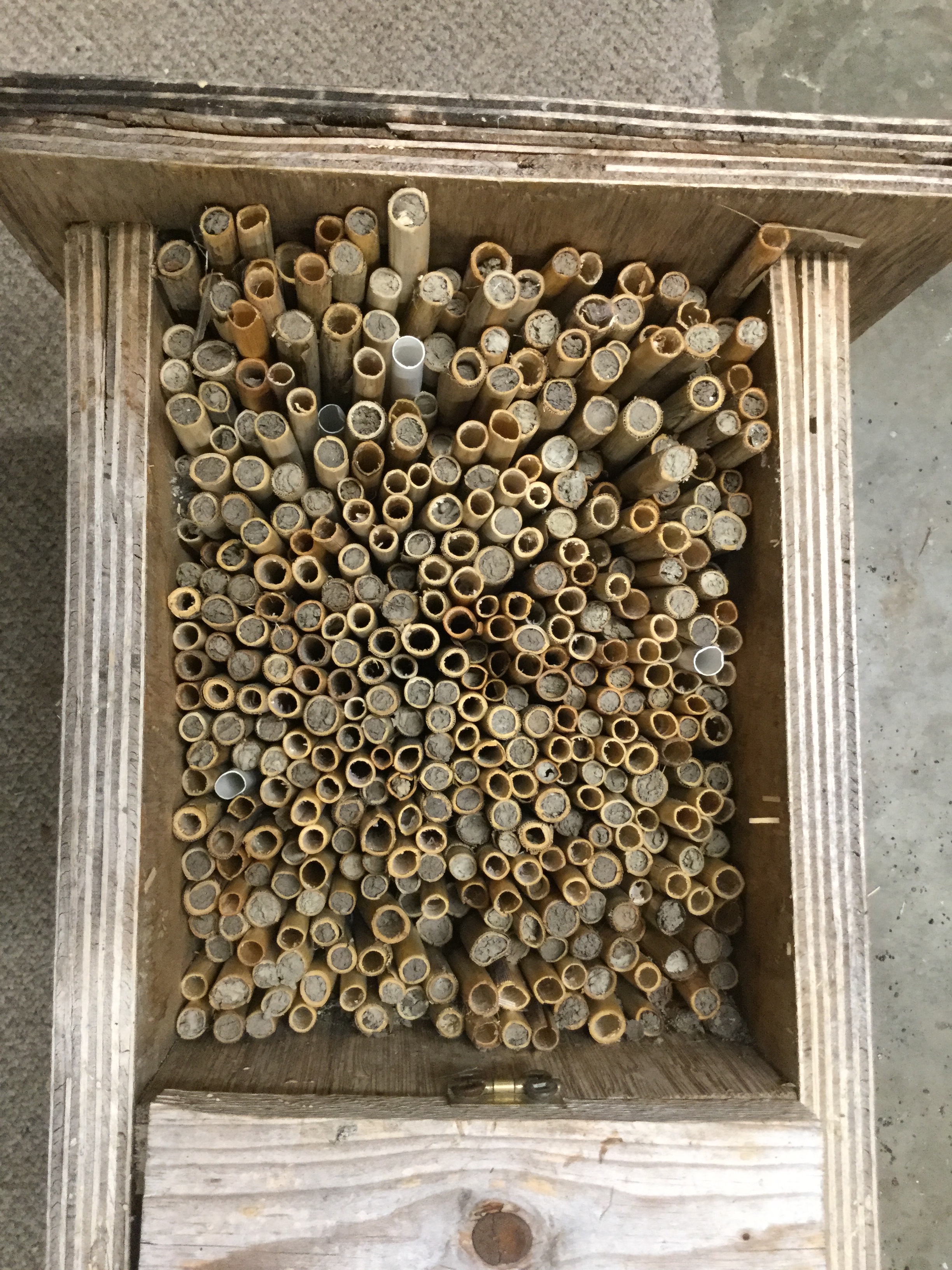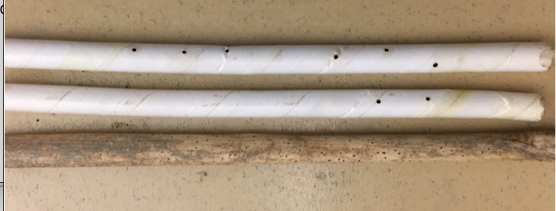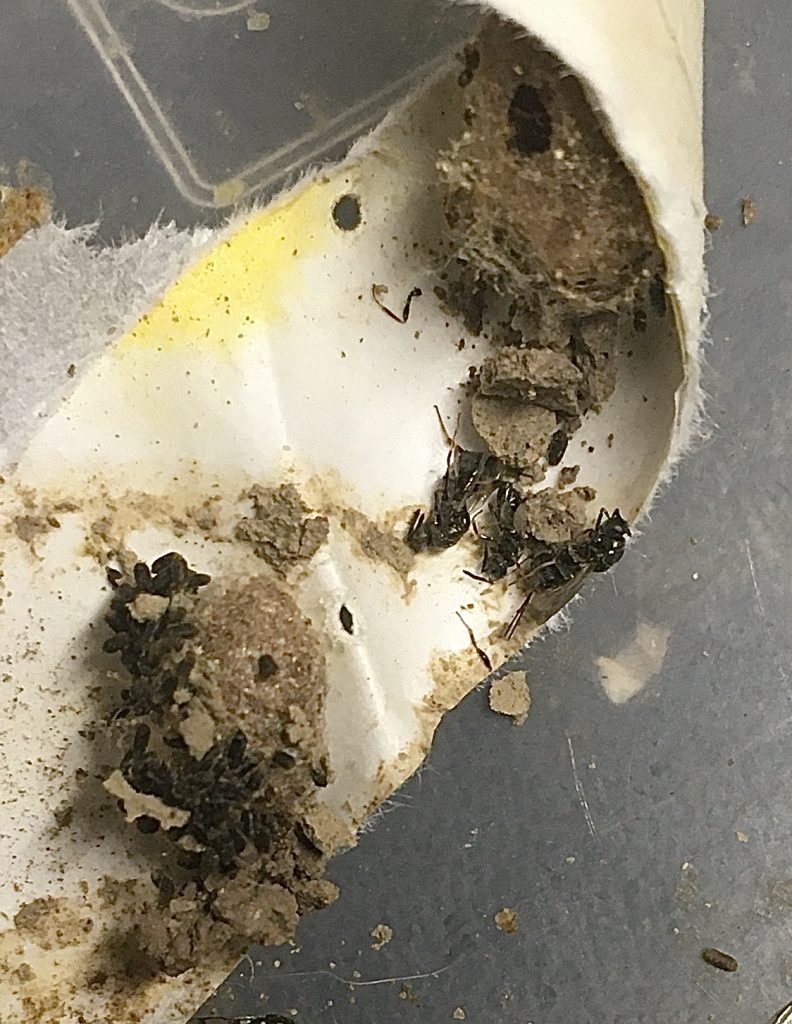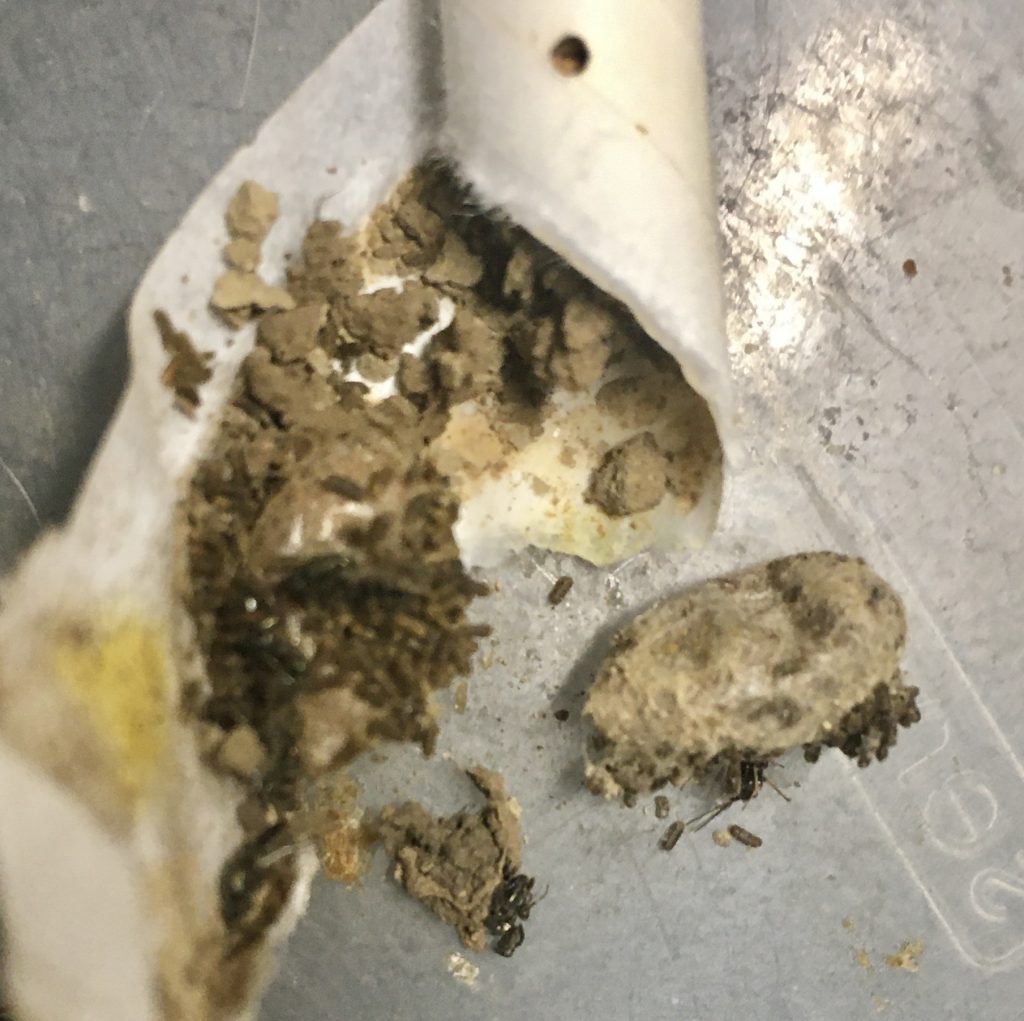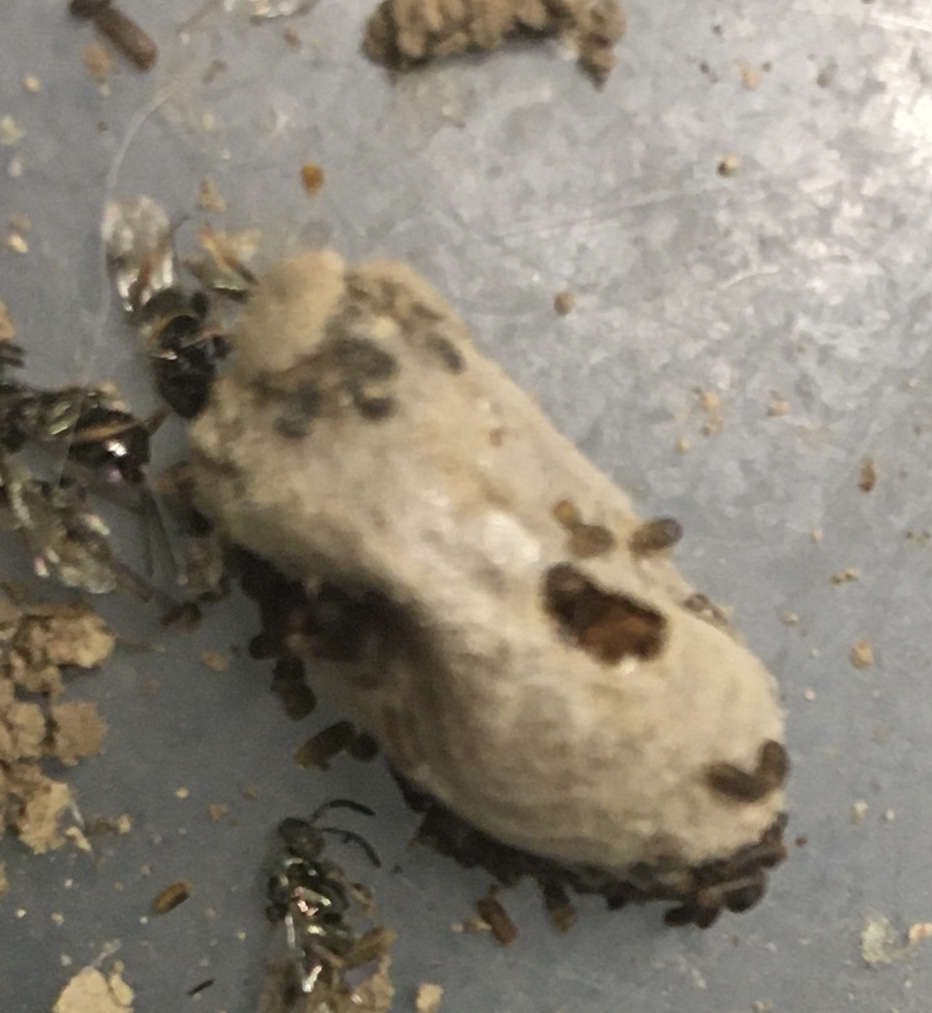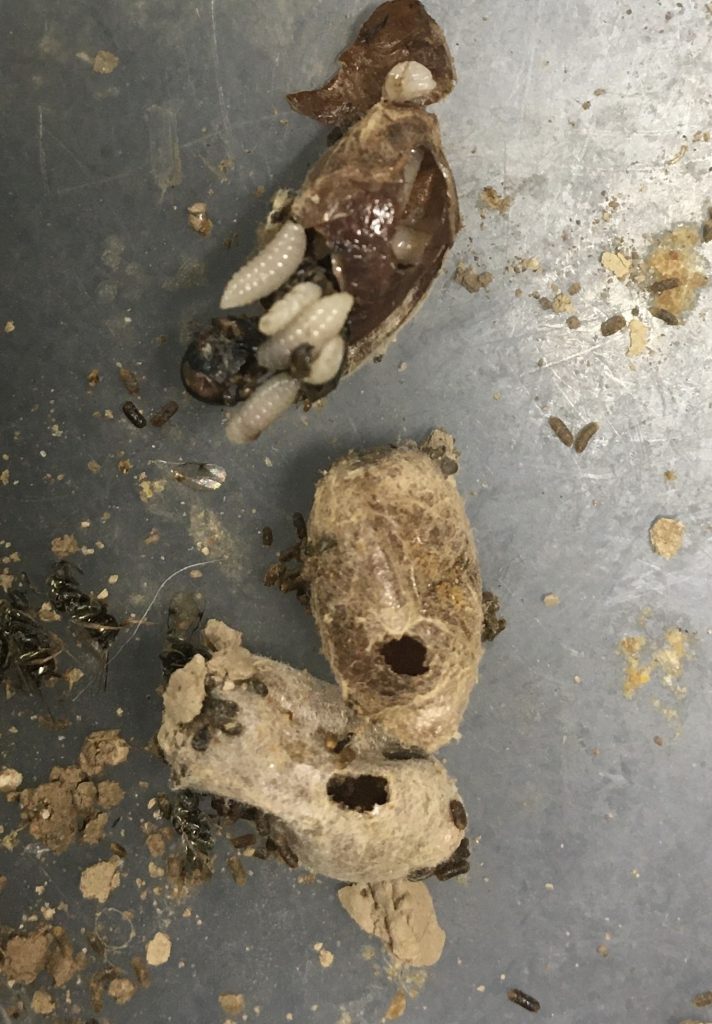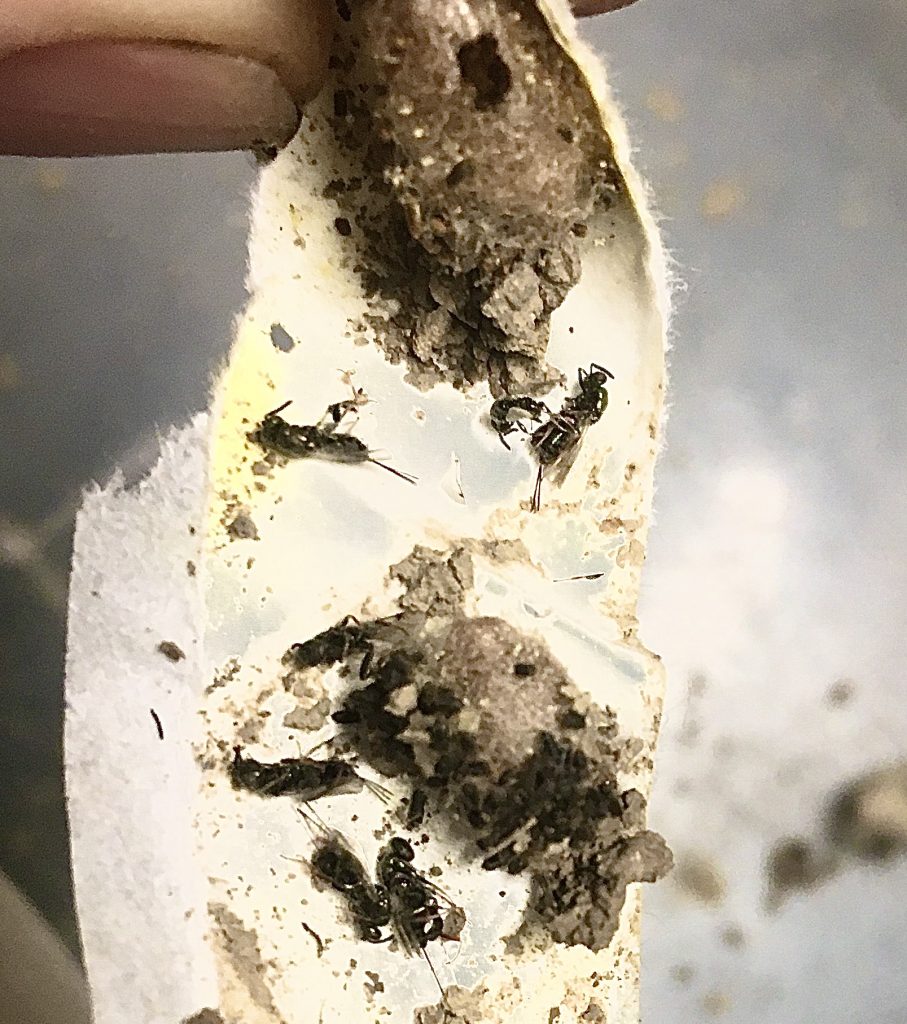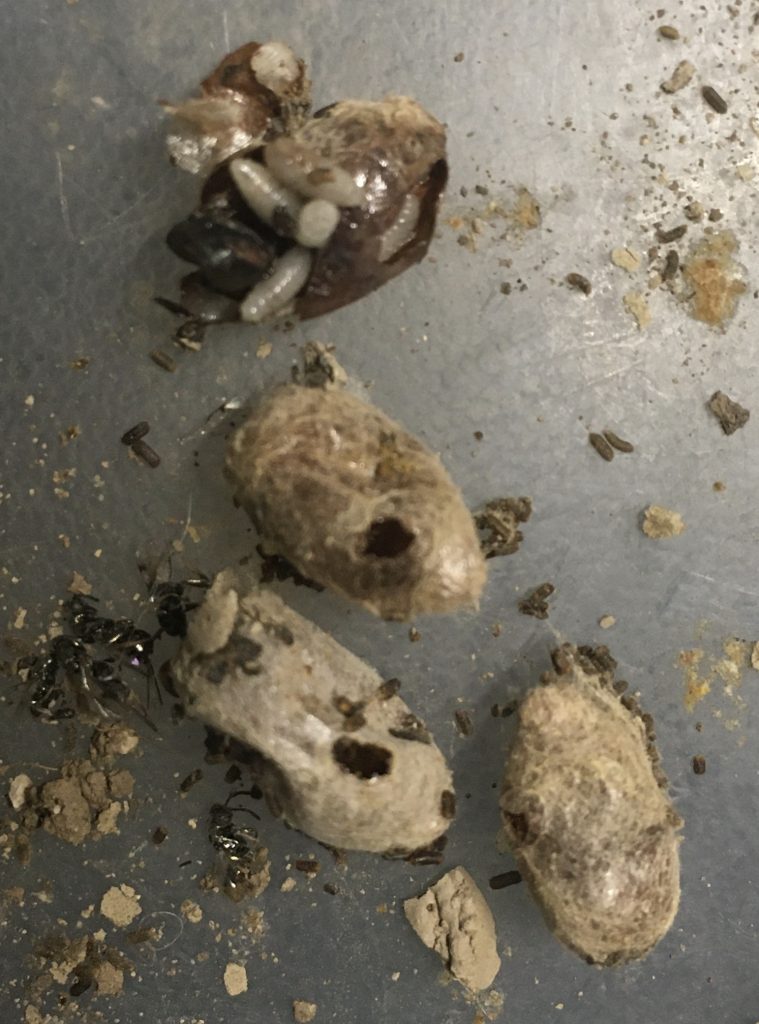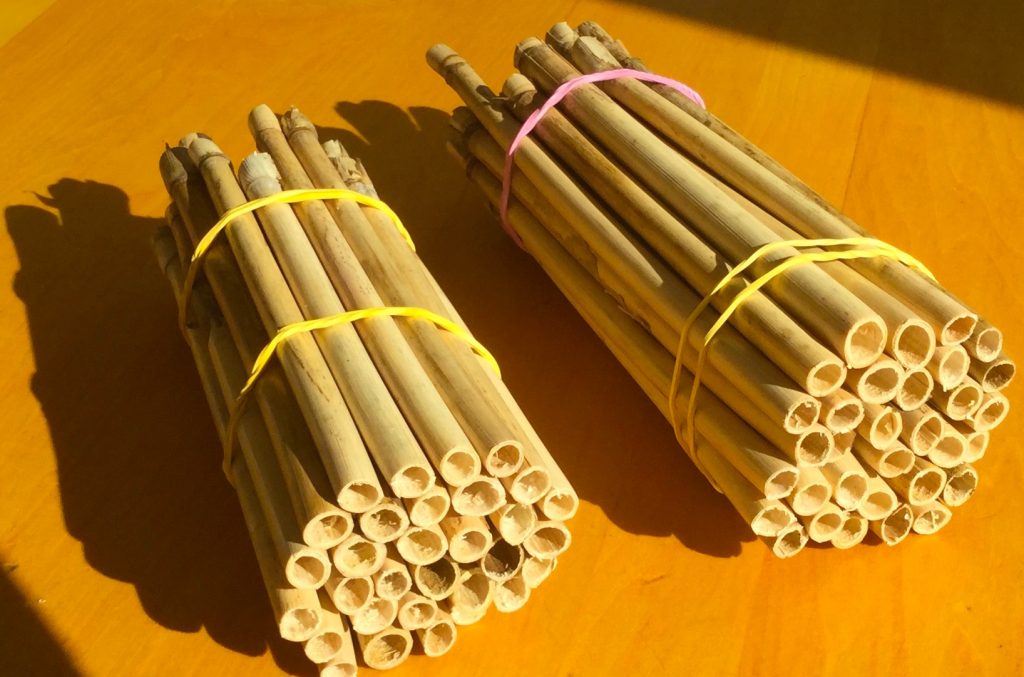I have several posts on this website about the Phragmites reed Grass tubes for Mason Bee homes. Access the posts here:
https://gfletcher.ca/category/mason-bees-and-phragmites_reed-grass-tubes/
On the website masonbeesforsale.com
I have found a list of the best reasons for using the native Reed Grass tubes Phragmites australis ssp. americanus for homes for Mason Bees. The pros and cons are listed:
Phragmites Reed Tubes:
pros: Phragmites Reeds are by far our top choice in nesting materials! They are the best option for several reasons,
1- Size/Shape-Reed tubes naturally vary in size, bees also vary in size and preferences so most bees will find a size they like to nest in. Each tube is cut between nodes so there is a natural back wall. Solitary bees prefer a fully enclosed space to nest in.
2-Protection-They are pest resistant. Mites and parasites aren’t able to burrow through the sides or the backs of the tubes because of the nodes in the stem.
3-Waterproof– Water will not soften or ruin the tubes. phragmites reeds will naturally wick away moisture. This also decreases the risk of mold, fungus and mildew affecting the bees.
4-Sustainable-Each reed is hand cut to the ideal length (approx. 6 inches= 15.6 cm) from natural sources. Cutting reeds is more environmentally friendly than the burning that often takes place to get rid of the reeds.
5-Easy Sorting– At the end of the season the reed tubes can easily be split in half. Bees can easily be sorted without damaging the cocoons.
cons:
1- Disposable-Reeds need to be replaced after each season, this requires purchasing new tubes. Luckily they are affordable.
2- Predators– Squirrels and Raccoons are sometimes able to get the tubes out of the bee house if not packed tightly enough. Placing some chicken wire over the front of the bee house and packing the reed tubes tightly in the house will prevent predators from getting your bees.
